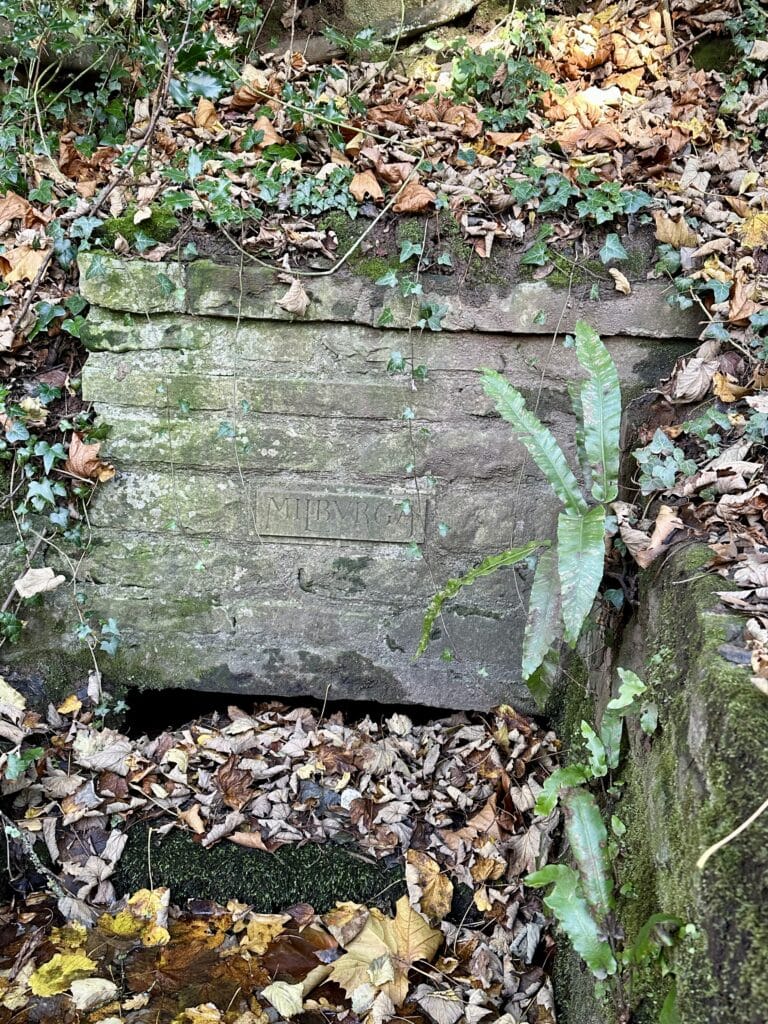Who was St Milburga?
St Milburga Chapel was erected in 1842 and given the name of a saint that most people outside of Shropshire will have never heard of. So who was St Milburga, why did the chapel take her name and what is her connection to the area?
Milburga was born into royalty and was the daughter of an Anglo-Saxon King Merewalh. Her birth date is unknown but likely to be the mid-600s to early 700s. At the time, England was split into various kingdoms and sub-kingdoms, with many Kings and Queens each ruling their own domains. King Merewalh ruled an area encompassing the modern-day counties of Herefordshire and Shropshire.
They were a pious family, King Merewalh having converted to Christianity in 660AD upon marriage to a Kentish princess, Domne Eafe, a descendant of King Ethelbert, England’s first Christian King. King Merewalh and his religious wife would go onto to found a number of monasteries and abbeys across the area. Domne Eafe would eventually become an abbess herself. Milburga also had 2 sisters who would both go onto to become abbesses so no surprise then that this would become Milburga’s destiny as well.
St Milburga and Lord of the Rings
However, prior to this Princess Milburga first had to escape the unwanted attention of a neighbouring prince who sought her hand in marriage by any means, including force. According to legend, she made her escape crossing over the river Corve with her unwanted suitor and his army hot on her heels. In a scene reminiscent of Lord of the Rings, the river then became so swollen with water that he was unable to continue his pursuit and so the royal princess was saved from his unwanted advances.
Princess Milburga went on to become a nun in Wenlock (now Much Wenlock) at an abbey founded by her father. At this time, it was common for abbeys/monasteries to be “dual houses” with both monks and nuns living and worshipping there and an abbess as its head. Milburga eventually ascended to the role of abbess – hardly unexpected given who her Dad was! According to accounts, the abbey was extremely successful under her leadership and she was able to expand its land and wealth. It appears that Milburga and her abbey were known far and wide at the time and she would have been well acquainted with leading figures in the Anglo-Saxon church, achieving a degree of fame.
St Milburga the Miracle Worker
A number of “miracles” were attributed to her. It was said that she had the power of healing and could cure blindness. It was also said that she had power over birds to stop them from damaging crops. She created springs of water from no-where and barley where no seed had been planted. There is also a story of a dead monk returning to life in her monastery after his fellow monks prayed over his body. Unsurprisingly, she was well liked in the local community.
Milburga died in 716AD and was buried in the nun’s church in Wenlock. Soon afterward she was made a saint. The monastery was dedicated to her and an annual feast day on 23 February (probably the day she died) held in her honour.
Bones in a Pit
Fast forward a few hundred years to 1101AD. The church where Milburga was supposed to have been buried has fallen into ruin. Two boys are playing about in the ruins when they fall into a pit and discover her bones – must have been a bit of a shock! The local monks realising what has been discovered, dig up the bones and place them in a casket. News spreads and soon pilgrims are flocking from all around. Various miracles are now attributed to her relics putting “flesh on the bones” so to speak that these were indeed the remains of the famous St Milburga.
Throughout, the 13th. 14th and 15th centuries St Milburga continued to be held in great reverence. Her relics were placed in a specially built shrine and people continued to travel from far around to see them. It was also very good business for the town of Much Wenlock which prospered during these times. At least 2 of the local pubs are said to have been established during this period.
However, with the dissolution of the monasteries by Henry VIII in the mid-1500s, the shrine was ransacked and the whereabouts of St Milburga’s relics were lost forever.
Shropshire Day – 23rd February
St Milburga has never been forgotten though, at least not in Shropshire and the 23 February every year continues to be honoured as a feast day across the county. It is now known as Shropshire Day and has become an annual celebration with numerous events across the county. St Milburga has become synonymous with the county of Shropshire.
And remember those springs that were said to have sprung out of no-where? If you visit Much Wenlock you can see one of the best preserved. St Milburga’s Well is a stones throw from the town centre and is still rumoured to have healing powers.
St Milburga’s Well, Stoke St Milborough
But you don’t even have to go that far because just down the road from the chapel on the left hand side before you reach the bend, a beautifully carved wooden sign and stone steps leads down to another site of those famous springs. Yes, Stoke St Milborough has its own St Milburga Well, just a short stroll from St Milburga Chapel. Small wonder then that the Primitive Methodists who built our tiny chapel decided that St Milburga would be a fitting name for the quaint little building.

